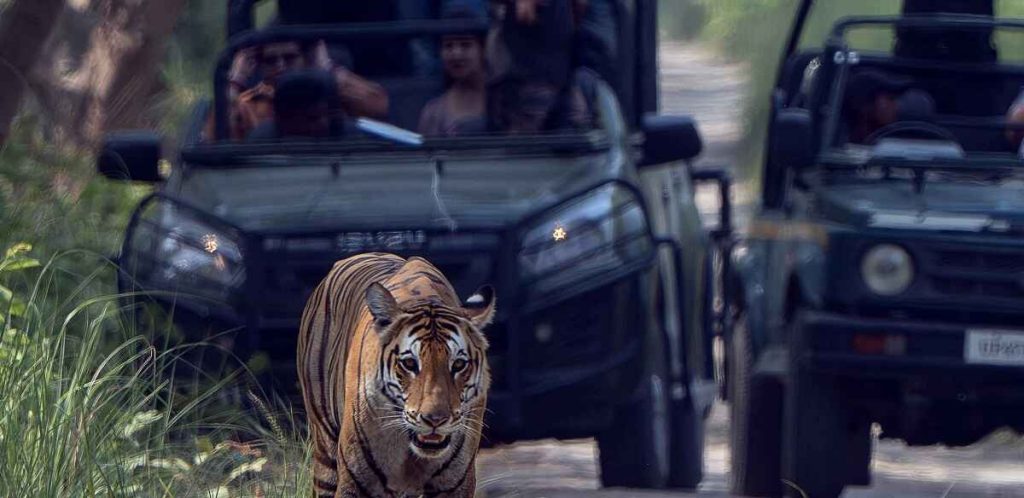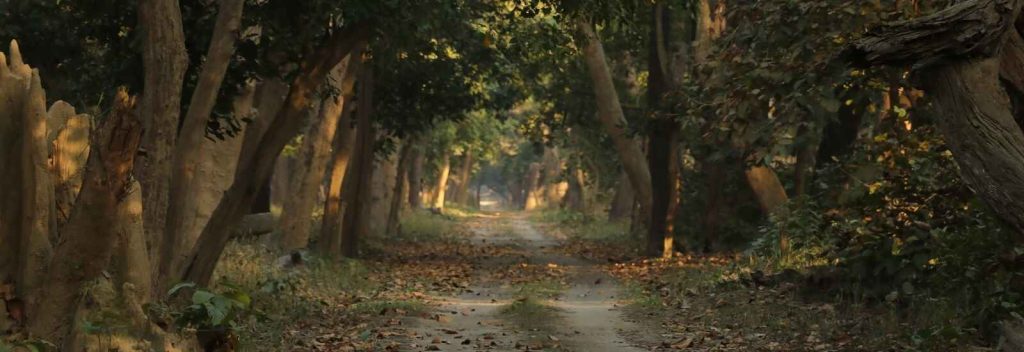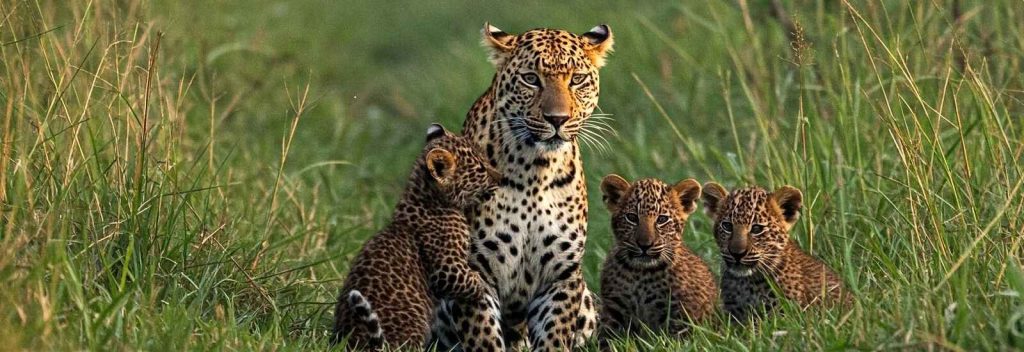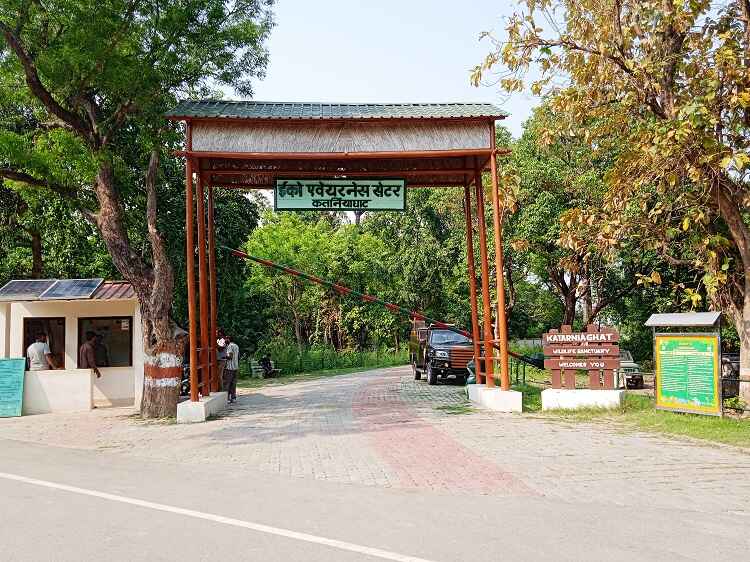Amidst the extreme eastern end of Uttar Pradesh, the Katarniaghat Wildlife Sanctuary is amongst the least known but highly ecologically opulent regions of the Dudhwa Tiger Reserve. Even though tourists usually pour into the Dudhwa National Park, Pilibhit Tiger Reserve, and Kishanpur Wildlife Sanctuary, Katarniaghat is the tranquil destination where serious wildlife lovers and nature lovers will like to go. Its landscapes (magical in any sense), aquatic biodiversity, and endangered species make it a place one can hardly find main experiences elsewhere.
Unique Terrain and Location
Katarniaghat is unique in terms of diversity in topography. In comparison to expansive plains of Dudhwa National Park or the thick cover of sal forests of Kishanpur, rivers, streams, marshlands, such as the well-known Girwa River, crisscross Katarniaghat. The landscape is rich in water, which enables species that are not usually found in other sections of the reserve to exist. What it also has is possibilities to organize boat safaris, which is what makes Katarniaghat an outstanding destination in the whole Terai Arc Landscape.

Wildlife Diversity Never before seen
1). Gangetic Dolphin
The five endangered Gangetic Dolphins could also be seen here in their natural environment, which made Katarniaghat one of the few sites in India where dolphins could be sighted in their natural habitat. These are rare aquatic mammals that are not frequently viewed in other regions of Dudhwa Tiger Reserve.
2). Gharials and Mugger Crocodiles
The Girwa River is one of the important breeding sites of the gharial crocodiles, which are on the brink of extinction. These waters are also shared with mugger crocodiles, making the sanctuary more diverse reptilian-wise.
3). Elephants and Swamp Deer
The marshy grass lands serve as fine grazing lands to the barasingha (swamp deer) and elephant herds, mainly during the rainy as well as the winter watering season.
4). Birdlife
Katarniaghat is also a paradise for a birdwatcher. The sanctuary is a bird photography paradise with more than 400 species documented, featuring white backed vulture, lesser adjutant stork, black necked stork, different kinds of kingfishers, hornbills, and eagles.
Fewer Crowds, Deeper Connection
In comparison to the most visited areas of Dudhwa National Park and Pilibhit Tiger Reserve, there are not many visitors in Katarniaghat, so there is no noise of vehicles, no disturbance, and a more original wild nature. This seclusion increases the likelihood of observing the behavior of the animal closer to their natural habitat.
It could be seeing a gharial pig slide into the river or hearing the call of a hornbill over the distance, but the experience is personal and less invasive, somehow.

Boat Safari A Signature Experience
The Boat Safari along the Girwa River is something you never want to miss. Cruising slowly along with serene waters before some turtles, crocodiles, dolphins, and waterbirds is unreal and only brings extra character to your wildlife adventure.
Book your boat safari with eco-tourism experts such as Dudhwa Royal Safari. By doing this, you can be assured that with an expert guide, you are being responsible towards the jungle.
Flora And Habitat Zones
The ecosystem in Katarniaghat varies between tall grasslands, riverine forests, and tropical wet deciduous forests. This combination of ecosystems sustains a robust trophic structure, which carries the understanding that each type of species, including insects and amphibians, and top predators, is important.
Safari zones, such as Motipur, are more wooded, and Kakraha is focused much on grasslands. This renders Katarniaghat a total package where people have land and aquatic diversity as an ecosystem.

Significance of Conservation
The sanctuary is included in the bigger Terai Arc Landscape that acts as a key to shunting tigers and elephants in and out of Nepal and India. Katarniaghat has a long history of sustainable conservation, such as gharial in captivity and dolphin surveillance.
Community and Eco-Tourism
Local communities are being involved in eco-tourism and conservation. One can visit Katarniaghat, which promotes sustainable tourism by accommodating guests in homestays, and eco-guides educated by NGOs and forest departments will contribute to the local economy.
Accessibility and How to Plan Your Visit
Dudhwa National Park, Kishanpur Wildlife Sanctuary and Pilibhit Tiger Reserve are more famous in terms of entering them, but one can enter Katarniaghat through Bahraich. November to April is the best time to visit since the sanctuary is open and sightings are best during this period.
Travelling Tip: Keep your jungle safaris and places of stay pre-booked with quality operators such as Dudhwa Royal Safari, to be safe, comfortable, and with a guide.
Final Thoughts and Conclusion
Katarniaghat Wildlife Sanctuary is not up to the popularity of the Dudhwa National Park, Pilibhit Tiger Reserve, or the Kishanpur Wildlife Sanctuary, but the uninterrupted combination of aquatic and terrestrial biodiversity makes Katarniaghat an unfathomable jewel of the Dudhwa Tiger Reserve.
Fine aquatic wildlife found in rare aquatic animals, such as Gangetic Dolphin, to the dangerously endangered mammal, gharials, dense marshlands, and tranquil river rafting, Katarniaghat serves as the perfect alternative to the more typically jungle-oriented tourism industry.
Therefore, in case you are in search of escaping the mundane and reveling in the beauty of the Terai, which is pure and wild, then Katarniaghat awaits.
Plan your wilderness getaway now with Dudhwa Royal Safari and experience the magic of Katarniaghat before the world gets to know.


 How To Reach Katarniaghat
How To Reach Katarniaghat
